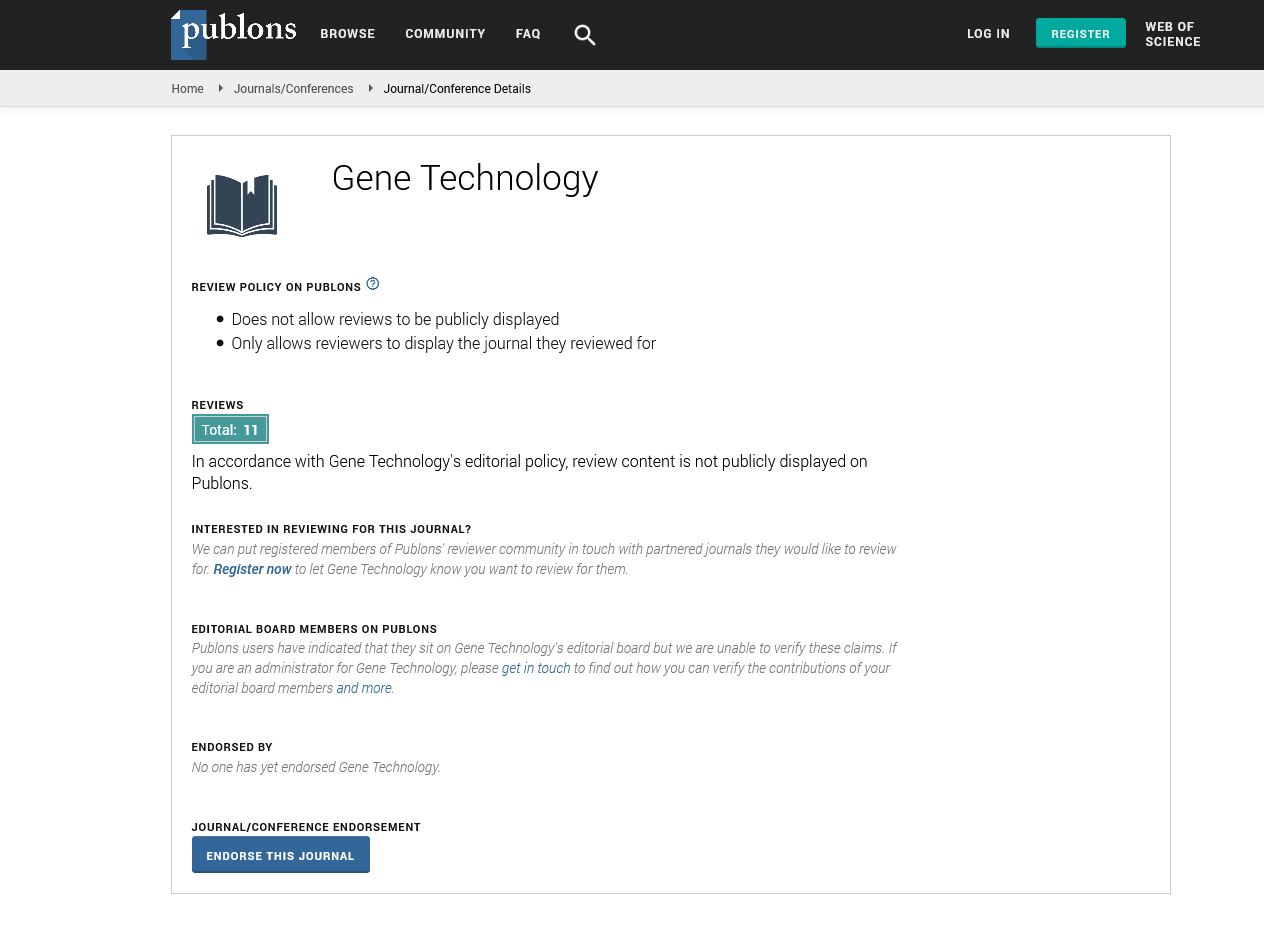Indexed In
- Academic Keys
- ResearchBible
- CiteFactor
- Access to Global Online Research in Agriculture (AGORA)
- RefSeek
- Hamdard University
- EBSCO A-Z
- OCLC- WorldCat
- Publons
- Euro Pub
- Google Scholar
Useful Links
Share This Page
Journal Flyer

Open Access Journals
- Agri and Aquaculture
- Biochemistry
- Bioinformatics & Systems Biology
- Business & Management
- Chemistry
- Clinical Sciences
- Engineering
- Food & Nutrition
- General Science
- Genetics & Molecular Biology
- Immunology & Microbiology
- Medical Sciences
- Neuroscience & Psychology
- Nursing & Health Care
- Pharmaceutical Sciences
Opinion - (2025) Volume 14, Issue 1
Advances in Gene Expression Profiling for Modern Genomics
Alessia Cavazza*Received: 01-Mar-2025, Manuscript No. RDT-25-29039; Editor assigned: 03-Mar-2025, Pre QC No. RDT-25-29039 (PQ); Reviewed: 17-Mar-2025, QC No. RDT-25-29039; Revised: 24-Mar-2025, Manuscript No. RDT-25-29039 (R); Published: 31-Mar-2025, DOI: 10.35248/2329-6682.25.14.316
Description
Gene expression profiling is a powerful molecular biology technique that measures the activity of thousands of genes simultaneously to understand the cellular functions and regulatory mechanisms within a specific biological context. This methodology has revolutionized the study of genomics by providing insights into gene activity patterns, allowing researchers to identify genes involved in specific diseases, developmental processes, and responses to environmental changes.
The foundation of gene expression profiling lies in the central dogma of molecular biology, where DNA is transcribed into RNA and then translated into proteins. The quantity of RNA produced from each gene reflects its level of expression. By analysing RNA levels through various platforms such as microarrays or RNA sequencing (RNA-seq), researchers can determine which genes are active, overexpressed, or under expressed in a given sample or condition. RNA-seq, in particular, has emerged as the gold standard due to its high sensitivity, dynamic range, and ability to detect novel transcripts.
In clinical research, gene expression profiling plays a vital role in understanding complex diseases such as cancer, cardiovascular disorders, and neurological conditions. For instance, in oncology, tumor gene expression patterns can distinguish between different cancer subtypes, predict disease progression, and guide therapeutic decisions. Profiling has led to the development of diagnostic tools like the Oncotype DX test, which helps in determining the risk of breast cancer recurrence and assists clinicians in tailoring personalized treatment plans.
Beyond diagnostics, gene expression profiling is integral to drug discovery and toxic genomics. Pharmaceutical companies utilize this technology to identify drug targets, monitor gene-level responses to treatment, and evaluate potential toxicities. By observing how gene expression changes in response to compounds, researchers can gain mechanistic insights and refine drug candidates early in the development pipeline. This accelerates the identification of effective therapeutic agents with fewer adverse effects.
In agricultural biotechnology, gene expression profiling contributes to crop improvement by identifying genes responsible for traits such as drought tolerance, disease resistance, and yield enhancement. Through differential gene expression analysis, scientists can pinpoint key regulatory genes and pathways, leading to the development of genetically modified crops with desirable characteristics. This approach supports food security and sustainable agricultural practices, especially under changing climatic conditions.
One of the key challenges in gene expression profiling is the complexity and volume of data generated. High-throughput sequencing platforms produce large datasets that require advanced bioinformatics tools for proper analysis and interpretation. Statistical models, clustering algorithms, and machine learning techniques are employed to identify meaningful patterns, eliminate noise, and correlate gene expression with phenotypic outcomes. Data normalization, quality control, and validation through quantitative PCR or other methods are essential steps to ensure the accuracy and reproducibility of findings.
Recent advances in single-cell RNA sequencing (scRNA-seq) have further refined gene expression studies by enabling the analysis of gene activity at the level of individual cells. This technique has uncovered cellular heterogeneity within tissues and revealed previously unknown cell types and states. Single-cell profiling is particularly valuable in developmental biology, immunology, and cancer research, where understanding the behavior of individual cells can provide deeper insights into tissue organization, immune responses, and tumor microenvironments.
In conclusion, gene expression profiling remains a foundation of modern genomics research and applications. Its ability to unravel intricate gene regulation patterns and provide actionable insights continues to impact diverse fields, from human health to agriculture. As technologies evolve and computational tools advance, the potential of gene expression profiling to drive scientific discovery and innovation will only grow further.
Citation: Cavazza A (2025). Advances in Gene Expression Profiling for Modern Genomics. Gene Technol. 14:316.
Copyright: © 2025 Cavazza A, et al. This is an open-access article distributed under the terms of the Creative Commons Attribution License, which permits unrestricted use, distribution, and reproduction in any medium, provided the original author and source are credited.

